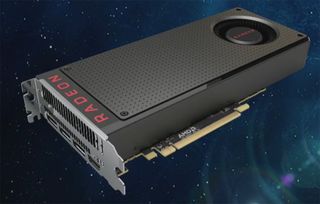AMD is not just fighting a battle with Nvidia in graphics, but also excess inventory
In with the new, but not out of the old.

AMD just capped off its most profitable year since 2011, and that has investors excited about the company's future. To wit, AMD's share price is up more than 15 percent in early morning trading today, following yesterday's fourth quarter and full-year earnings report, which is filled with rosy numbers. That said, one of the more interesting things to emerge from an accompanying conference call with investors pertains to graphics. Simply put, AMD and its channel partners are still sitting on piles of old graphics cards as AMD tries to push out new ones.
This is not a situation that is unique to AMD, of course. Earlier this week, Nvidia CEO Jensen Huang candidly referred to the fourth quarter as a "real punch in the gut" due to lower than expected GPU sales, including certain high-end graphics cards based on the company's new Turing architecture.
AMD and Nvidia are not in entirely the same boat—two of Nvidia's main issues are that its GeForce RTX series is priced too high, and currently there are not many games that tap into Turing's unique capabilities, such as real-time ray tracing—however both are upfront about existing excess inventories of older cards.
"So when we look at the GPU channel inventory, we do believe our channel partners reduced inventory in Q4 and they will reduce inventories in Q1. We still think the Q1 levels are elevated and there will be some spill over into Q2, and we will see some elevated inventory levels. We'll have to see how the sell-through really, really plays out. But my expectation is that Q2 will have improved channel inventory levels and we will return to sequential growth in the gaming side of our business," AMD CEO Dr. Lisa Su said.
Taking aim at the high end, AMD recently announced its Radeon VII, which is based on a 7-nanometer version of Vega and will go on sale next week for $699. It's part of what AMD considers its "broadest and most competitive product portfolio ever." This will be followed up by Navi, AMD's next generation GPU architecture, later this year.
The $699 price point is right up there with the GeForce RTX 2080. It remains to be seen what kind of interest it generates, especially with Dr. Su acknowledging that even though "gamers are still buying GPUs," they also may be "more discerning about price points."
"And so I can imagine that there might be a bit more softness at the high end versus in the midrange. But we believe that we have a good understanding of what's happening in the gaming side of the business, and it will be driven. Our gaming growth will be driven by new products. We would see that as we go through this year and with our Radeon VII launch, as well as our Navi launches on the gaming side," Dr. Su said.
The biggest gaming news, reviews and hardware deals
Keep up to date with the most important stories and the best deals, as picked by the PC Gamer team.
The bottom line here is that there could remain opportunities to pick up previous generation graphics cards (Polaris, first-gen Vega, and Pascal) at lower price points, as vendors look to clear out existing stock. As always, we'll pass along any tantalizing deals we come across.
Paul has been playing PC games and raking his knuckles on computer hardware since the Commodore 64. He does not have any tattoos, but thinks it would be cool to get one that reads LOAD"*",8,1. In his off time, he rides motorcycles and wrestles alligators (only one of those is true).
Most Popular





